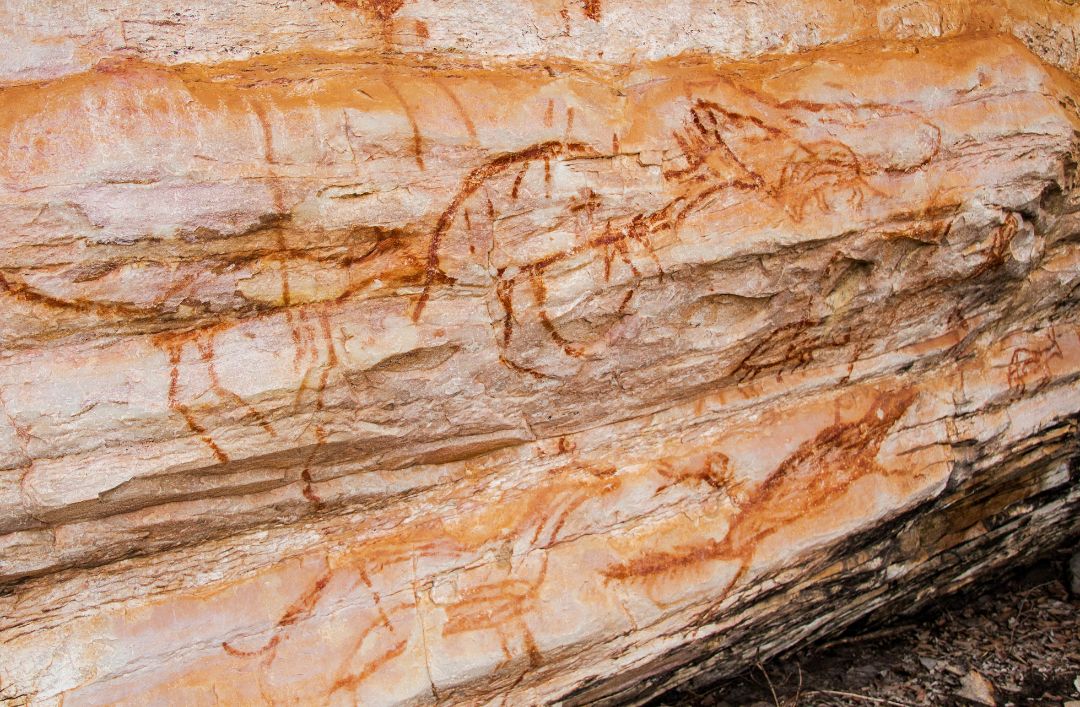
Mar 28, 2023 | Activities/Services, Local events
With the onset of good weather, it’s time to get out of the house, breathe in the fresh air and feel the spirit of nature and the light that bring life to Cumbre del Sol. There are endless things to do around your home, however our blog always has something new to offer from end to end of the Costa Blanca Norte.
Benissa is one of the least-known places in the Marina Alta. This gap in awareness of its existence is actually commensurate with its beauty. It has one of the oldest town centres in the area, as well as lovely countryside, beaches and monuments with an endless list of things to do, both in the town and its surrounding area. One of its most picturesque (and unknown) attractions is surely its cave paintings. We tell you about them in this article, where to find them, and how to visit them.
The charm of the unknown
There is nothing like discovering something new somewhere just a few kilometres from your home, and that is exactly the case with these cave paintings. You can reach the place on foot along a hiking trail, just 5 kilometres from Benissa, or if you prefer, you can also get there by car. It is close to the rural district of Pinos at a place called Abrigo de Pinos (Shelter of the Pines but also known locally as “Barranc de la Tía Isabel”).
The shelter is an overhang of chalky rock some 200 metres long which has several caves, in one of which you will find the paintings. They were discovered in 1970, and in 1985 they were officially declared as Cultural Heritage and, subsequently a World Heritage Site. The set of paintings is protected by a metal grill placed on the rock wall so that the paintings can be viewed without getting too close, thus they are protected from deterioration or any other problems. There are four explanatory panels alongside them so that you can situate them in time and understand the figures, as many are camouflaged by the rock. Even so, the one known as “Eva Pinera” has become an iconic figure. Standing with arms akimbo, experts have dated this painting as 6,000 to 8,000 years old. At just 50 centimetres away from this figure, it is possible to discern a zoomorphic representation typical of the Levante which has been partially lost. There is also another portrayal of four figures that appear to be holding hands.
Unmissable Benissa
If having viewed the paintings you are thinking of what else you can do, we suggest that you visit Benissa if you don’t know it yet. In the Marina Alta, and only a short distance from the road leading to places like Calpe, Moraira, Altea, Teulada or Benidorm, the town is easy to reach and an essential stop-off in the Costa Blanca Norte.
One of the reasons that you will love this place is its cuisine. Strongly influenced by the sea and the mountains, it is varied and made with care. The star dish here is “putxero de polp”, or octopus casserole, originally a fishermen’s dish. This stew is made with pulses (beans) potatoes, vegetables and rice.
Benissa is a must-see if you want to discover somewhere in the Marina Alta that is less well-known, but certainly no less charming. Some months ago we published a post on plans for things to do in Benissa and you can read about it here. We suggest that you look out for our upcoming blog posts so that you don’t miss out on anything going on around Residential Resort Cumbre del Sol.

Mar 15, 2023 | Activities/Services, Events, Otros pueblos
Cherry blossom time is one of the year’s great events. Every springtime the cherry blossom in the Vall de la Gallinera, in the Marina Alta, rewards us with this spectacle. It is a phenomenon that usually occurs mid-March to early April depending on the weather.
The Costa Blanca Norte in general and Cumbre del Sol in particular is one of the loveliest places in Spain, known for its beaches and coves, but also for its interior. This area inland is one of the best places to see the cherry trees in bloom. It is a spectacle that has been acknowledged by the Comunitat Valenciana Tourist Office and also travel magazines such as Condé Nast Traveler. This district is up there with the best known parts of Spain, such as Alfarnate, in Málaga, the Valle del Jerte, in Cáceres, El Hornillo in Ávila and the Valle de las Caderechas in Burgos as one of the best places to view one of nature’s spectacles.
Historically known as a cherry producing area, La Vall de Gallinera is a village of 570 inhabitants that lies in a valley. The river Gallinera runs through it and it is ringed by the mountains of the Sierra del Almirante, the Sierra de la Albureca and the Sierra Foradada.
Benirrama, Benialí, Benissivà, Benitaia, La Carroja, Alpatró, Llombai and Benissili make up the area where you enjoy a unique sight in the Comunitat Valenciana region along the “8 Villages Trail”. This is the ideal way to discover the area as you pass by the natural springs, water troughs, charming little streets, the surrounding countryside and of course cherries. We tell you the best way to go about it!
Discover inland Costa Blanca Norte
The “8 Villages Trail” is a route that you take at any time of the year, as we have mentioned it is particularly recommended in March, to coincide with the cherry blossom that carpets the slopes of Vall de Gallinera with a blanket of white.
The trail is 14 kilometres long, although you can walk just parts of it as you wish. The route is signposted and runs mainly through tarmac farm tracks, with only slight inclines (with the odd exception) and so it is ideal for children on one of those sunny Sundays that are perfect for a family outing.
However, this is not a circular route, so the entire return trip is 28 kilometres which might be a bit much if you simply want to enjoy the countryside. So instead we recommend one of the following options:
- If you travel with 2 cars, you could leave one at the start, and park another one at the end of the trail, and that way you can walk the whole 14 km just one way.
- Simply walk a part of the route. In that case you could start out from one of the villages along the way. It would probably be best to choose one of the central villages which have the most services and facilities if you are planning to stop and eat, Benialí, where La Vall town council is located, is a good choice.

One of the main attractions along the route are the innumerable springs that bubble up fresh and clear from the mountain peaks of the Serra Foradà, on the southern side of the valley and from the Serra de l’Almirall, which encloses the valley to the north.
The trail is indicated at all times. In each village you will find panels containing information, as well as signposts at regular intervals along the way.
In short, this is a route for everyone, because you can walk the trail (and see the springs, public laundry places and enjoy the countryside in this beautiful valley) or by car and enjoy exploring all the villages.
The area is well kept with a lot of history and architectural, artistic and natural heritage. A spectacular landscape with its high mountains and a lively environment. We cannot think of a better plan close by, as spring approaches, than to have a wander around these eight villages with the cherry blossom as an added extra.

Feb 9, 2023 | Activities/Services, Benitachell, Cumbre del Sol, Other towns, Otros pueblos
It might not be the best known attraction of the Costa Blanca Norte, but the interior of many of the region’s mountains harbour a network of caves (some of which are open to visitors while others remain inaccessible) that enrich the landscape, and when you venture inside some of them you may well come across vestiges of the past life of this place.
The latest exciting news about the world of caves concerns Cova de les Morretes in Benitachell. Following some important 20th century finds involving treasure, work on restoring the cave has now been completed and if you are walking the Ruta dels Penya-Segats trail, you will come across it in an exclusive location that boasts some of the finest views of the Costa Blanca Norte. A museum no less, that looks out to sea.
These caves once served as a refuge for locals who struggled to make a living from fishing and by working the adjacent terraces. In order to supplement their meagre income, they also dabbled in a bit of smuggling, most likely tobacco.
Having completely restored the walls, roof and some of the interior elements, while at all times keeping the essence of the place and its original materials, the idea of this Cultural Heritage site is to “museumise” the cave so that it can be visited both physically and virtually, making it accessible to anyone interested in paying a visit. So now you have something more interesting to do on your Sunday hiking trail near Cumbre del Sol!
Costa Blanca Norte: cave area
If a visit to the Cova de les Morretes has whetted your appetite, you’re in luck. As we mentioned, the Costa Blanca Norte harbours a multitude of caves to visit or view on your country walk. We tell you about some of them below.

Rull Cave
This cave is in Vall de Ebo. It was discovered by José Vicente Mengual, known as Tío Rull, in 1919. In the 60s it was restored and made available for visits, and remained open to tourism until 1970. Later it was inherited by his heirs who sold it to the Public Authority in in 1995 and it was again opened to tourists, once the installations had been refurbished. Today it is open to the public and you can also take advantage of a guided visit as well.
Las Calaveras Cave
This cave which was discovered in the 16th century is in Benidoleig and is 70 metres above sea level. Its takes its name from the fossilised remains of hyenas, horses, bears, bulls hippopotamus and rhinoceros that were found in the cave interior, which are now housed in Alcoy museum.
Adsubia Cave
Also known as the cave of Canalobres (not to be confused with the Caves of Canelobre) you will find this cave in Adsubia. It is a perfect example of a little corner of the subterranean world that conceals a wealth of valuable natural treasures that are guaranteed to make your visit an amazing experience.
Canelobre Caves
These caves are found in Busot and they are probably the best known of this whole list. They consist of a space extending over more than 80,000 m², accessed through a 45 metre tunnel, in which water and rock have combined over centuries to create impressive stalactites, stalagmites and columns. One interesting fact in this regard is that the roof of the cave is one of the highest vaults in the whole of Spain, measuring 70 metres high. Not only that, due to its magnificent acoustics, it has been used on numerous occasions for music concerts.
As always, the Costa Blanca Norte can surprise you when you are least expecting it. In this blog post we have told you about the caves that can be found in the mountain areas, however, in an upcoming post we plan to tell you all about the wealth of marine caves that lie under the Mediterranean waters. Keep an eye open for our future blog posts!
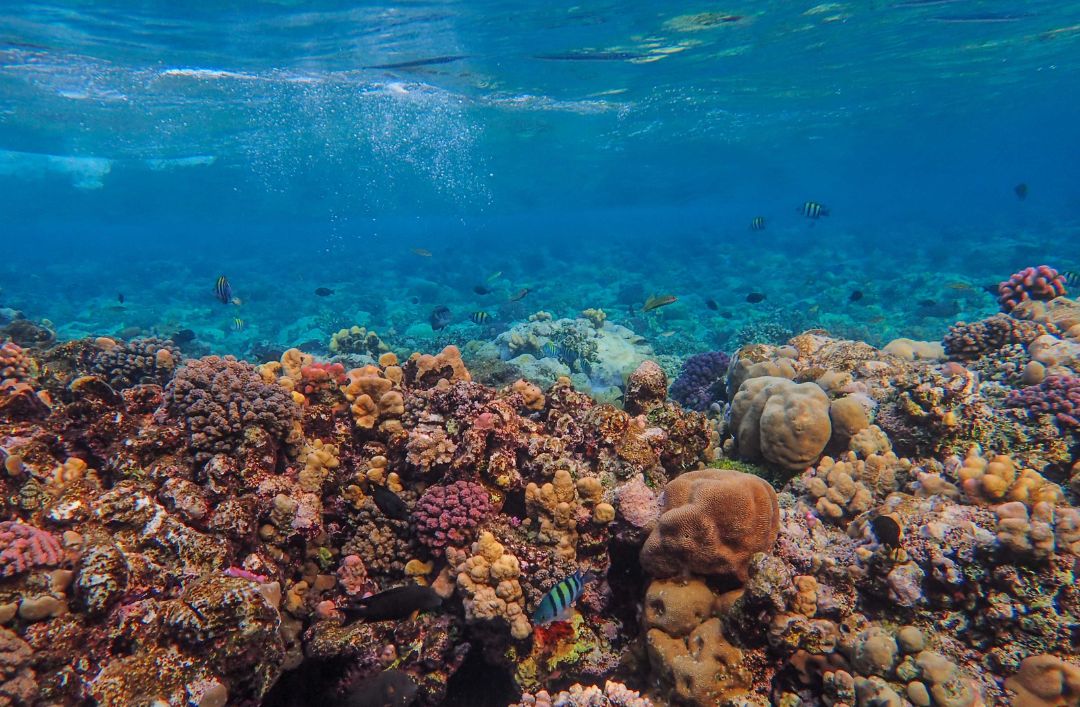
Jan 30, 2023 | Activities/Services, Other towns
Water comprises almost three quarters of the Earth. Water flows through different places, rivers, lakes, glaciers, seas, and oceans. Most of it in these last two bodies of water, and of those, we only know about 5% of their depths which harbour treasures in the deep just waiting to be discovered.
The Costa Blanca Norte is an unmissable destination for fans of scuba diving. The main reason is the beauty of the marine depths that are host to an enormous wealth of flora and fauna which will delight anyone seeking to explore the sea bed. Throughout this area you will find different routes for diving and there are several schools where you learn about this sport, such as La Galera or Dive & Dive. In this blog post we tell you about some really special ones.
Starting out at La Granadella
For real beginners, or those without much experience who want to get involved in this world, our first recommendation would be to follow one of the underwater routes that you can find at La Granadella beach. It is well known for the beauty of its sea bed and admired by all divers. In fact, the route closest to the beach, from where it can be accessed directly, is an easy one with a maximum depth of around 10 metres.
El Vaporet
A few miles from the port of Denia, you can find “El Vaporet”, a former cargo vessel that sank in the late 19th century. If you dive there you will see several species that shelter in the wreck, as there are no rock formations in the vicinity, and you can find conger eel, lobster, spiny lobster, along with white seabream, gilt head bream and grouper. They are, however, found at a considerable depth, and given the currents there, and possibly reduced visibility, it is advisable to undertake this particular route only when conditions are excellent, and if you are a really experienced diver.
El Freskito
You´ll find this place on the beach of las Rotas de Denia, some 4 km from the port. In the swimming pool created by natural rock and transparent sea water, this easy and beautiful route begins. It’s a good idea to explore the craggy rocks that make up the pool walls as there you may see octopus, European fan worm, spoon worm and perhaps a Moray eel.
Cap de Sant Antoni: La Cullerà and Primera Ensenada
The first of these caves can be found at the foot of the cliffs of the Marine Reserve of Cap de Sant Antoni. If you want to dive in this cave, which penetrates up to 50 metres into the mountain, it is necessary to get permission from the Board of the Environment to explore it. Armed with this permit, you can explore the cave which is at a depth of 9 metres where you will find slipper lobster, meagre, and a conger eel here and there. Not to mention octopus, sea bream, grouper and plenty of meagre hiding in the myriad nooks and crannies in the rocks.

Another excellent route in this area is Primera Ensenada, which is just before you reach the lighthouse. This area is protected (you will need authorisation to enter) and lies at a depth of 16 metres where the sea bed is shaped by the large rocks scattered here and there in the sand, and it offers an exceptionally beautiful and lively environment, perfect for seeking out species that are difficult to spot in other places.
The area around the Cap de Sant Antoni lighthouse is also a place where you can contemplate the beauty of the Costa Blanca marine depths. Here the enormous rocks on the seabed are particularly striking, as they create passageways and a play of shadow and light, providing a spectacle that will charm underwater photographers. Throughout the route you will see the white gorgonian coral, and depending on how close to the rock wall you venture, you can dive down from 12 to 19 metres, a depth at which you can spot an even greater variety of interesting species of flora and fauna.
Doesn’t it make you want to get into your wetsuit? Whether you live close to Cumbre del Sol or you simply came upon this artícle when you were looking for things to do on the Costa Blanca Norte, we would encourage you to enter this marvellous world and discover the best waters that the Mediterranean sea has to offer.
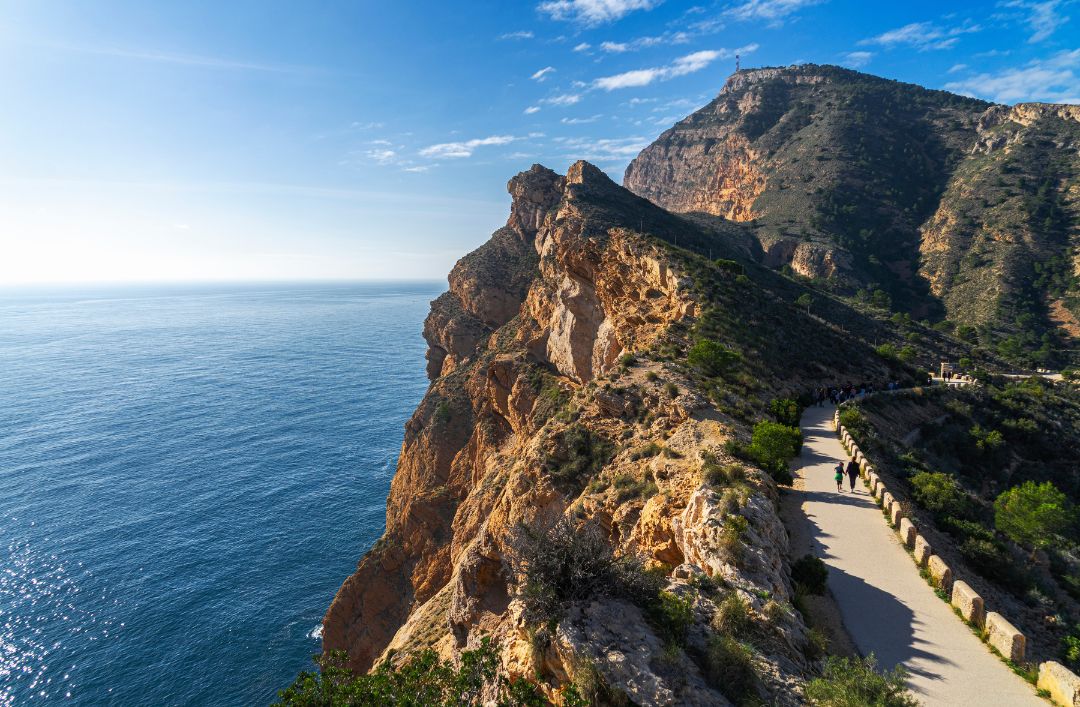
Jan 23, 2023 | Activities/Services, Cumbre del Sol, Other towns
During the summer there are plenty of plans and things to do in the area and it is normal for the loveliest spots to be full of people, and so it is harder to enjoy them 100%. Due to its enviable climate, the Costa Blanca Norte is one of those destinations that can be rediscovered and also enjoyed during the colder months. In this blog post we suggest some activities and places close by Cumbre del Sol that will make you love the low season in one of the most charming and delightful areas of the Spanish Levant.
The Javea look out trail
There are 15 cliff tops, 15 scenarios, 15 different ways of looking at the sea. From Cap de Sant Antoni to Castell de la Granadella, you can take a trail that will captivate all your senses. You can enjoy views of Montgó, ancient 16th century windmills, look out points, islets, not to mention the local flora and fauna. You will find the complete list so you can map out your itinerary by clicking on this link.
Discover the “other side” of Altea
With its famous dome, its historic town centre, the seafront promenade, the Yacht Club, the beaches… Altea offers everything you can imagine so why not look at this amazing place from another perspective? A great plan for one of those sunny Saturday or Sunday winter mornings would be sailing around the bay of Altea. Not only that, there are a number of sailing schools in the town where you can learn all about this wonderful world.
Trails in Serra Gelada
Although we’d need a whole article to give you an in depth view, in this post we focus on an enjoyable route that begins in el Albir, which is at the end of the “Camí Vell del far”. This trail is two and a half kilometres long and takes you past ochre mines and little beaches culminating in a look out point with incredible views.
Climbing the Peñón de Ifach
This outing is a classic at any time, although it is better enjoyed when the temperature is lower and there are fewer people around. Two and a half hours is the time it takes to be rewarded once you’ve climbed the 332 metres: the most comprehensive views of Calpe and its bays, and on a clear day you can even see Ibiza. But don’t forget to wear the appropriate footwear!
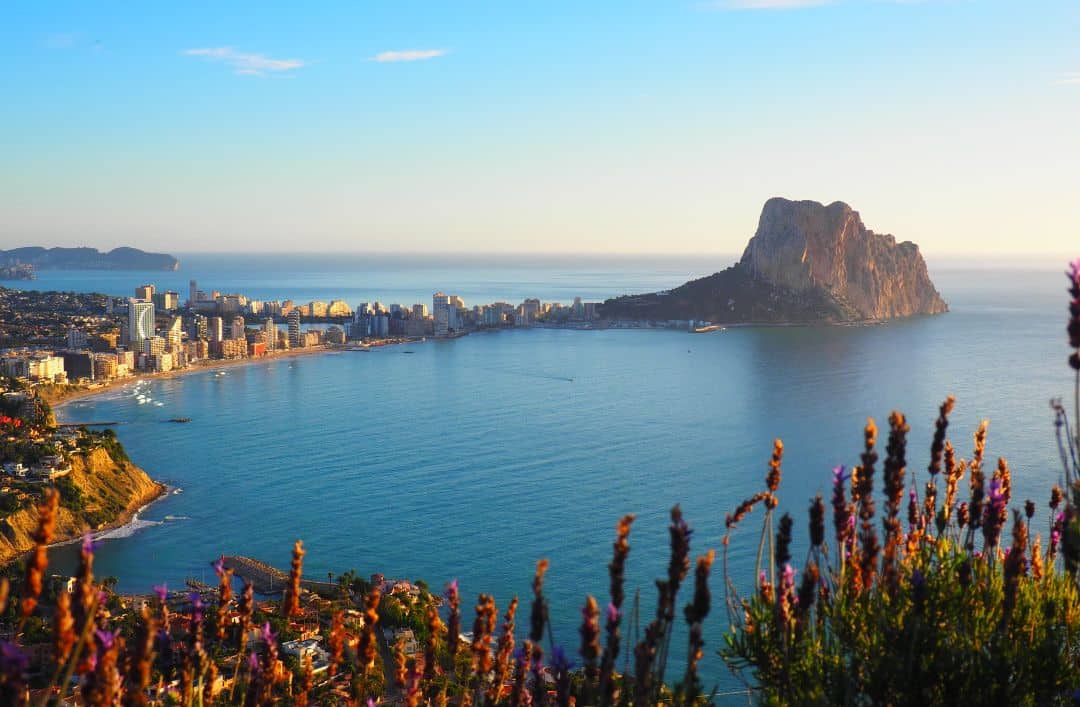
Checking out the Michelin Stars in la Marina Alta
La Marina Alta is also a culinary benchmark in the Spanish Levant. In November 2022 the 7 restaurants awarded the highest accolade for gastronomy in Spain managed to renew their 10 stars which were awarded to the following restaurants:
Audrey’s de Calp, 1 Michelin Star.
Beat de Calp, 1 Michelin Star.
Quique Dacosta de Dénia, 3 Michelin Stars.
Peix & Brases de Dénia, 1 Michelin Star
Casa Pepa de Ondara, 1 Michelin Star.
BonAmb Restaurante de Xàbia, 2 Michelin Stars.
Tula Restaurante de Xàbia, 1 Michelin Star.
Other plans in and around the Costa Blanca Norte
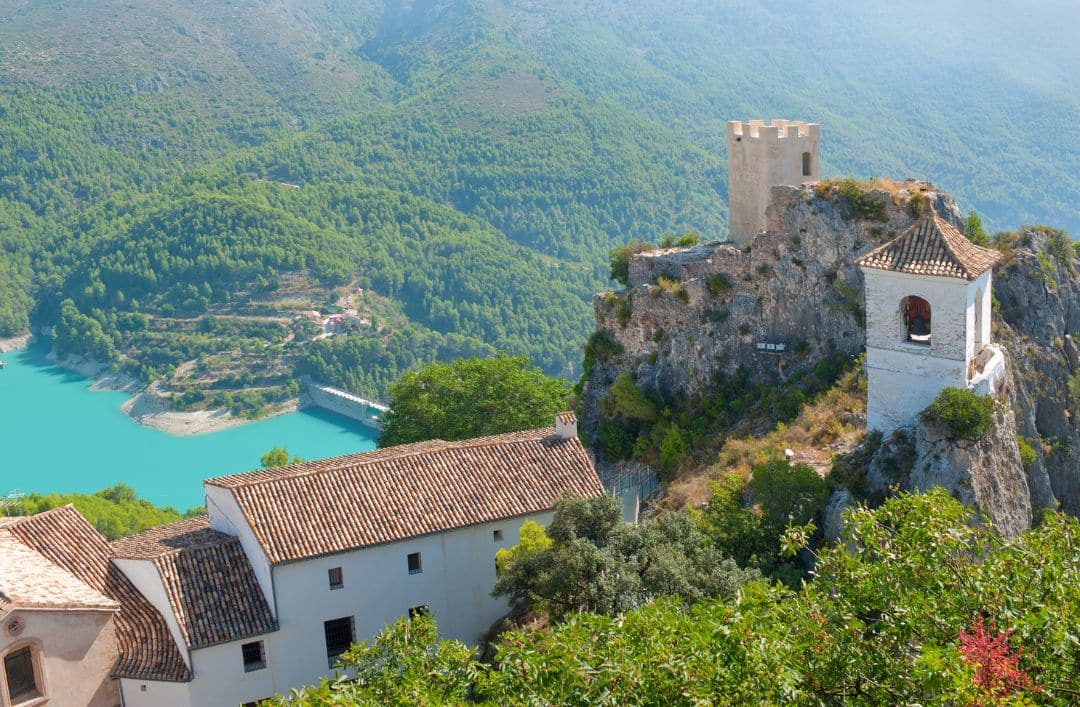
Discover the caves of Canelobre
An extremely attractive option, just a few kilometres away from Alicante, is a trip to the caves of Canelobre. A huge variety of stalactites, stalagmites, and columns created by the waters around Busot. What’s more, in the interior you’ll find one of the highest vaults in Spain and a stalagmite that is over 100,000 years old.
Guadalest: inland is lovely too
El Castell de Guadalest is a remote village, nestling in the mountains in the shelter of the Xortà, Aitana and Serella mountain ranges, that has retained the Mediterranean essence with its whitewashed houses and their stone paved floors. This is an unmissable destination if you want to discover inland Costa Blanca.
Now that you know about some of the possibilities just a few kilometres from Residential Resort Cumbre del Sol, there’s no reason to stay home this weekend. For more plans and activities with destinations close to home, stay in touch and look out for our future blog posts.

Jan 12, 2023 | Activities/Services, Cumbre del Sol, Something special
La Marina Alta is so much more than a stroll by the seaside and warm temperatures, it is also the perfect place for enjoying delicious cuisine in the local restaurants, with menus that list the best rice dishes, seafood, and fish, not to mention other appealing specialities. As proof of this gastronomic wealth, 10 Michelin stars have been awarded to 7 Costa Blanca restaurants. Come with us on a culinary tour, where we tell you all about these restaurants, with their star dishes, and how to enjoy this great adventure for discerning palates, just a few minutes from your home in Residential Resort Cumbre del Sol.
Quique Dacosta Restaurant – 3 Stars
We have to start with the three starred Restaurant Quique Dacosta in Denia. Can a taste actually be beautiful? Beyond the aesthetics of the dish, the award winning chef has revolutionised kitchens with his gastronomic venture. That is, he endeavours to cook beauty, with the aim of promoting feelings and emotions in diners with every mouthful that they taste. As to the menu, the restaurant offers scant information, instead preferring to keep up the sense of intrigue until the end, in fact, they describe how the dishes are created based on the most iconic products and “other unknown” ones. Are you ready for the experience? To read more about the concept, and to make a booking , check out this link. However, given that the restaurant is in high demand, you will probably have to add your name to the waiting list.
Bon Amb – 2 Stars
Another place that is an essential visit is Bon Amb in Jávea. This restaurant, which has earned two Michelin stars, serves dishes based on a particular fishing practice namely, l’encesa, the ancient skill of fishing from the cliffs of the la Marina Alta. The menu follows the route of the encesers, and is divided into three different menus, each representing the path from the fields and market gardens to the Mediterranean sea: Cabàs, Canyís and Ham; all of which are accompanied by their aperitifs and desserts and with 8, 10 and 12 courses respectively. The restaurant is currently closed for holidays and will reopen on 9 February 2023.
Casa Pepa – 1 Michelin Star
In the meantime, you can book a table at Casa Pepa in Ondara, the Michelin starred restaurant that recently joined forces with the Bon Amb family, aiming to continue the legacy of Pepa Romans, who was able to recreate the essence of local gastronomic tradition in an innovative manner and bring it to the dining table. If you want to try some of the most iconic and delicious local dishes, you can book a table here.

Peix & Brases – 1 Star
For another unmissable experience, check out Peix & Brases in Denia. Awarded a Michelin star, this restaurant is clear regarding its aims, namely, without tradition there is no vanguard, which is why it looks to the future with its dishes, yet retains all that we have learned from the past. With its Essence and Tasting menus, you can enjoy a variety of dishes, typical of la Marina Alta cuisine, from a different yet absolutely delicious perspective. Not only that, but at Peix & Brases, you will find a completely different concept known as Mediterrasian, a more laid back part of the restaurant, as its name implies, which provides fusion dishes combining our culture with oriental cuisine. Mediterranean philosophy and Asiatic influence of the purest kind. For bookings, visit this link.
Tula – 1 Star
Continuing our recommendations, Tula in Jávea offers what they call real seasonal cuisine with Mediterranean ingredients, selected and prepared with the warmth and care of traditional home cooked food. Their menu is a celebration of the Mediterranean sea, and a treat for seafood lovers. To enjoy the experience of this Michelin starred restaurant, you can book here.
Audreys’s by Rafa Soler – 1 Star
Beat – 1 Star
Finally, Calpe also boasts a Michelin star, in fact it has 2, both of which are run by the AR hotel group. Let’s start with Audreys’s by Rafa Soler, which aims primarily to surprise the palate of its diners, while retaining the culinary memory that is the legacy of Valencian cuisine, yet with the most elegant style. You can book your table here, so don’t miss out on this experience. Another starred restaurant is Beat, which, with its techniques and preparation, displays sophistication that places local produce at centre stage. Its three menus,: Inspiration, Taste and Nature will delight the palate, book your table at reservas@ar-hoteles.com or call 900 103 798.
Now that you know all about the best restaurants close to Residential Resort Cumbre del Sol, there’s no excuse not to start the year with a proper festive meal. And remember, we are always here with our blog posts to let you know what’s going on in the Costa Blanca Norte.












